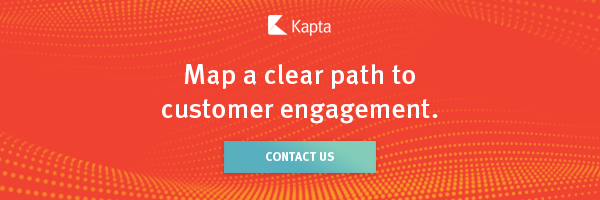How to Successfully Manage Customer Churn
in Customer Engagement, Key Account Management /Customers will leave for just about any reason today — and more often than not, it doesn't even have anything to do with your product or service. Research shows 92% of customers would leave after two or more bad experiences, 68% would go if they believe the company doesn't care about them, and 56% stop buying from brands they consider unethical.
But what's the first step to identifying the true reason for losing customers? Understanding the rate at which they're going. Enter: customer churn rate.
No matter what industry you're in or the type of business you run, you must understand how to manage customer churn to succeed. The insight you gain from evaluating churn will allow you to locate when and why customers are leaving to inform future decisions on how to avoid the same mistakes and lower churn in the process.
What is Customer Churn
Customer churn refers to the rate at which your business loses customers over a specific period. This could be month-to-month, quarterly, or even annually. It differs by business and industry, depending on your goals. For instance, if you want to evaluate the impact of a given promotion or deal, you may want to conduct a churn analysis that month. Controversial promotions could have had a backlash if you noticed higher churn rates at that time. On the other hand, you may want to consider quarterly or annually if you want a more holistic view of the rate at which customers leave.
Explore the complete, step-by-step guide to lowering your customer churn here.
Types of Churn
Customer churn can be either involuntary or voluntary. Although both can be used to evaluate the rate of your customers leaving, involuntary churn is passive, while voluntary churn is active.
Here's what that means for your business:
Voluntary
Voluntary churn is the most commonly measured as it refers to a customer actively leaving a company at a given time. Although the reasons for a customer leaving can vary dramatically from person to person, some of the most common causes include being dissatisfied with your product or service, finding the competition's product or service more attractive, no longer in need of it, or more common today — a difference in value, beliefs, and opinions with your brand.
The insight you gain from measuring voluntary churn is beneficial for understanding how satisfied and engaged your target audience is with your product or services. If you notice a spike in customers leaving, it's a good indication that it's time to update and adjust to techniques that would be more appealing to your customers (i.e., Redbox expanding into streaming as more people prefer it over in-person Redbox pickups).
Involuntary
On the other hand, involuntary churn refers to customers leaving passively, which is especially relevant for products or services that require a subscription. In this case, a customer isn't leaving because they're dissatisfied per se, but rather as a result of their payment declining and not making additional moves to fix the problem.
In fact, the problem could be anything from an expired credit card or website failure to payment being suspended due to potential fraudulence or insufficient funds. The best your company can do for involuntary cases is to optimize the payment process and evaluate ways you can reach these consumers with a note or reminder about upcoming payments (i.e., send an email about a card on file expiring ahead of the due date).
How to Successfully Manage Customer Churn
Now that you're familiar with the two types of churn, here's how you can successfully manage customer churn and use it to your advantage. The better you can manage customer churn, the better prepared you will be in anticipating and preventing customers from leaving.
Anticipate it
You must be able to identify and track predictable behavior that suggests a customer is open to leaving to prevent it. The sooner you can detect the signs, the sooner you can make changes that encourage the customer to change their minds.
For instance, one or more of the following signs would indicate that they could be about to churn:
- If you notice that customers aren't logging in as much and they aren't as involved
- If they downgrade their subscription
- If there are changes
- If the customer health score is falling
Prevent it
Preventing churn doesn't just mean responding to potential churns. It consists of being customer-centered at all times, putting the customer first at every touchpoint — as new customers and existing. This is particularly true for existing customers since it costs more to attract new customers than it does to take care of the ones you currently have. In fact, obtaining a new customer will cost you five times more than retaining an existing customer.
Some ways you can prevent churn from happening are by:
- Making a good first impression
- Making the customer the priority
- Ensuring proper product-market fit
- Rewarding loyalty
- Personalizing your product/services to the customer (requires a deep understanding of your audience — i.e., Netflix's 'because you watched...' recommendation system).
Successfully Manage Your Customer Churn With Kapta
Your customers are the reason your business has gotten as far as it has. They're also the ones who will take it to the next level as long as you take the time to not only understand their needs but appeal to them with your products/services, advertising messages, and customer service experiences. The better your relationship with your target consumers, the better you will be at increasing customer retention and decreasing customer churn.
With Kapta, our Key Account Management (KAM) software was created to transform customer relationships. Every tool has a purpose that will nourish long-term relationships while identifying any potential problems before they become problems so that you can be proactive. This includes churn management and consumer insight (i.e., Org Chart, Client Profiles, Voice of Customer, SWOT Tools, and more).
Contact us for more insight into how our KAM software can strengthen your relationships with customers, build loyalty that will keep them coming back for more, and help you respond to potential churn before they leave your company for the competition.






.png?width=180&height=180&name=TP%20Photo%20Bank%20(14).png)

